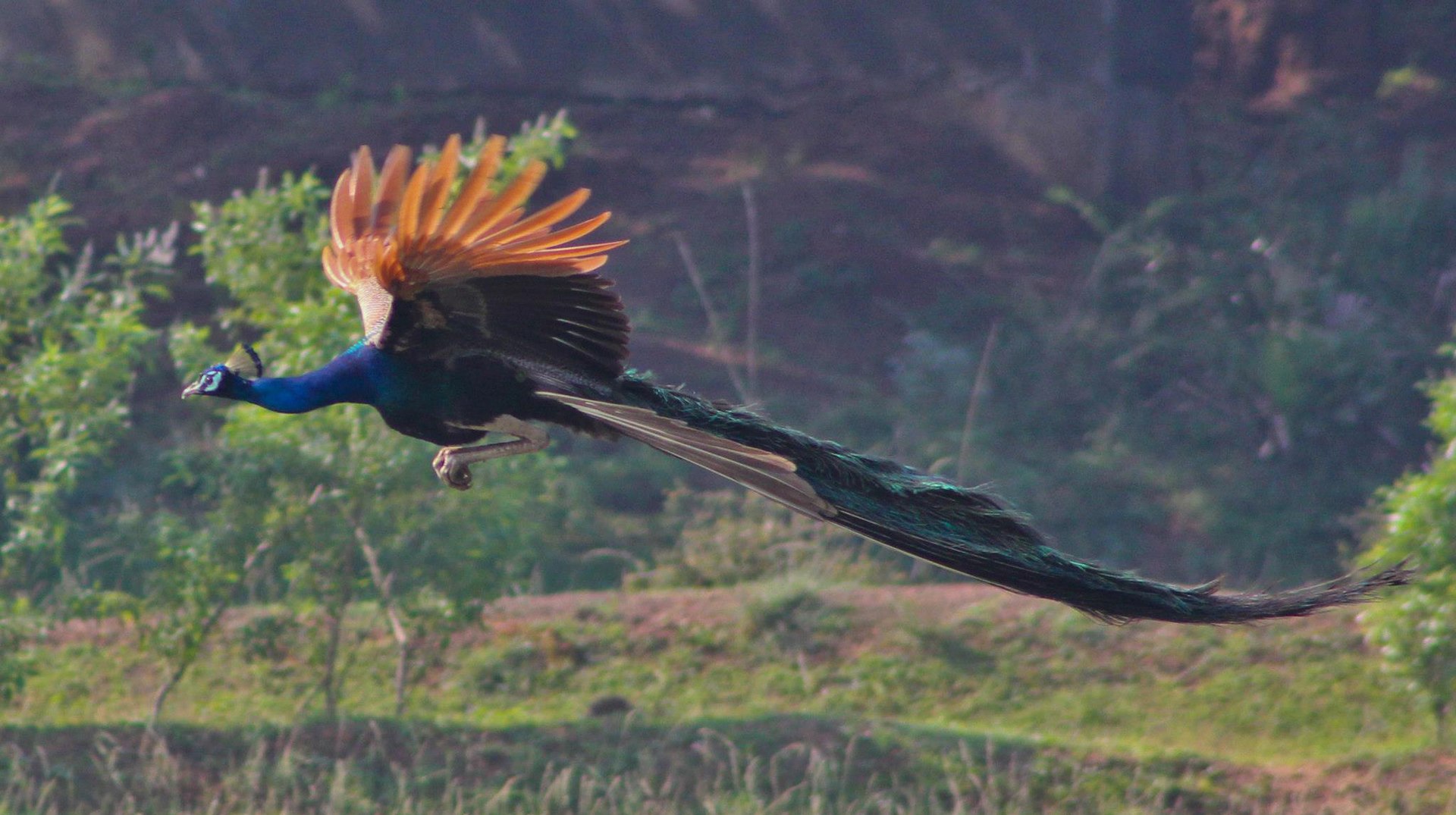Peafowl

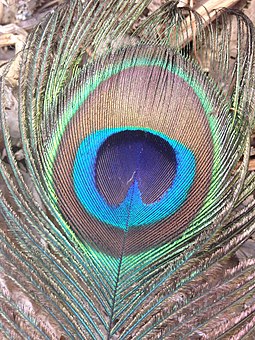
Natural Ways Farm added peafowls to its poultry flock in 2025. The Peacock, a majestic bird is the national bird of India. The peafowl is related to pheasants. The male is called a peacock and the female a peahen. The two Asiatic species are the blue or Indian peafowl originally from the Indian subcontinent, and the green peafowl from Southeast Asia. The third peafowl species, the Congo peafowl, is native only to the Congo Basin. Male peafowl are known for their piercing calls and their extravagant plumage. The latter is especially prominent in the Asiatic species, which have an eye-spotted “tail” or “train” of covert feathers, which they display as part of their courtship ritual. Peafowls are able to fly very far and high and are easily scared. Hybrids between Indian peafowl and Green peafowl are called Spaldings, after the first person to successfully hybridize them, Keith Spalding.[ Spaldings with a high-green phenotype do much better in cold temperatures than the cold-intolerant green peafowl while still looking like their green parents. Plumage varies between individual spaldings, with some looking far more like green peafowl and some looking far more like blue peafowl, though most visually carry traits of both. Occasionally, peafowl appear with white plumage. Although albino peafowl do exist, this is quite rare, and almost all white peafowl are not albinos; they have a genetic condition called leucism, which causes pigment cells to fail to migrate from the neural crest during development. Leucistic peafowl can produce pigment but not deposit the pigment to their feathers, resulting in a blue-grey eye color and the complete lack of coloration in their plumage. Pied peafowl are affected by partial leucism, where only some pigment cells fail to migrate, resulting in birds that have color but also have patches absent of all color; they, too, have blue-grey eyes. By contrast, true albino peafowl would have a complete lack of melanin, resulting in irises that look red or pink. Leucistic peachicks are born yellow and become fully white as they mature.
Male green peafowls (Pavo muticus) have green and bronze or gold plumage, and black wings with a sheen of blue. Unlike Indian peafowl, the green peahen is similar to the male, but has shorter upper tail coverts, a more coppery neck, and overall less iridescence. Both males and females have spurs. Chicks of both sexes in all the species are cryptically colored. They vary between yellow and tawny, usually with patches of darker brown or light tan and “dirty white” ivory. In addition to the wild-type “blue” coloration, several hundred variations in color and pattern are recognized as separate morphs of the Indian Blue among peafowl breeders. Pattern variations include solid-wing/black shoulder (the black and brown stripes on the wing are instead one solid color), pied, white-eye (the ocelli in a male’s eye feathers have white spots instead of black), and silver pied (a mostly white bird with small patches of color). Color variations include white, purple, Buford bronze, opal, midnight, charcoal, jade, and taupe, as well as the sex-linked colors purple, cameo, peach, and Sonja’s Violeta. Additional color and pattern variations are first approved by the United Peafowl Association to become officially recognized as a morph among breeders. Alternately-colored peafowl are born differently colored than wild-type peafowl, and though each color is recognizable at hatch, their peachick plumage does not necessarily match their adult plumage.
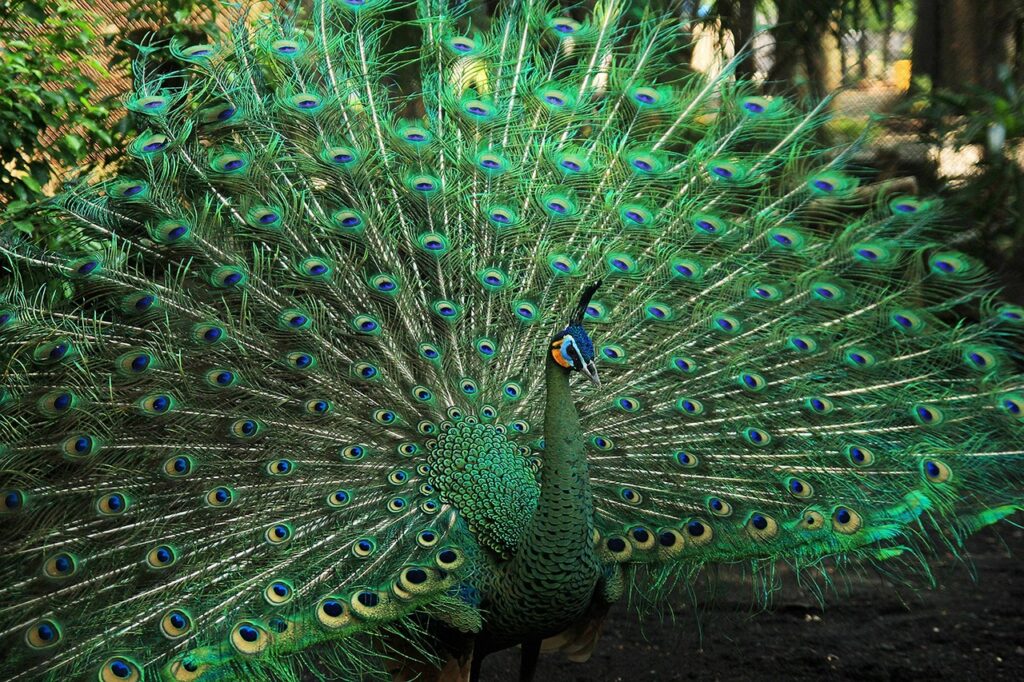

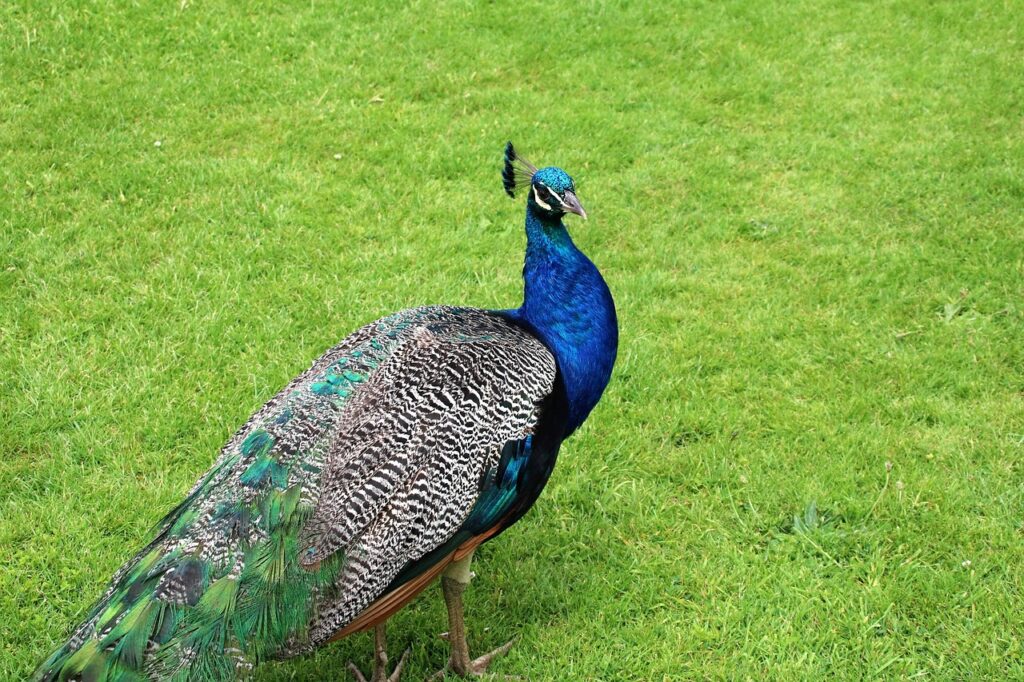
Most commonly, during a courtship display, the visiting peahen will stop directly in front of the peacock, thus providing her with the ability to assess the male at 90° to the surface of the feather. Then, the male will turn and display his feathers about 45° to the right of the sun’s azimuth which allows the sunlight to accentuate the iridescence of his train. If the female chooses to interact with the male, he will then turn to face her and shiver his train so as to begin the mating process. A peacock’s copulation success rate depends on the colours of his eyespots (ocelli) and the angle at which they are displayed. The angle at which the ocelli are displayed during courtship is more important in a peahen’s choice of males than train size or number of ocelli. Peahens pay careful attention to the different parts of a peacock’s train during his display. The lower train is usually evaluated during close-up courtship, while the upper train is more of a long-distance attraction signal. Actions such as train rattling and wing shaking also kept the peahens’ attention.
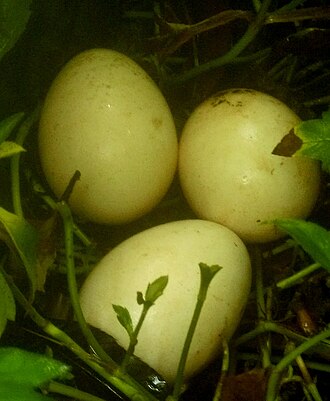

Peafowl are forest birds that nest on the ground, but roost in trees. They are terrestrial feeders. All species of peafowl are believed to be polygamous. In common with other members of the Galliformes, the males possess metatarsal spurs or “thorns” on their legs used during intraspecific territorial fights with some other members of their kind. In courtship, vocalisation stands to be a primary way for peacocks to attract peahens. Some studies suggest that the intricacy of the “song” produced by displaying peacocks proved to be impressive to peafowl. Singing in peacocks usually occurs just before, just after, or sometimes during copulation.
Peafowl are omnivores and mostly eat plants, flower petals, seed heads, insects and other arthropods, reptiles, and amphibians. Wild peafowl look for their food scratching around in leaf litter either early in the morning or at dusk. They retreat to the shade and security of the woods for the hottest portion of the day. These birds are not picky and will eat almost anything they can fit in their beak and digest. They actively hunt insects like ants, crickets and termites; millipedes; and other arthropods and small mammals. Indian peafowl also eat small snakes. Domesticated peafowl may also eat bread and cracked grain such as oats and corn, cheese, cooked rice and sometimes cat food. It has been noticed by keepers that peafowl enjoy protein-rich food including larvae that infest grain, different kinds of meat and fruit, as well as vegetables including dark leafy greens, broccoli, carrots, beans, beets, and peas.
Peafowl meat and eggs are consumed as food by humans though most birds are captured for their plumage and raised for their beauty. Natural Ways Farms has been fortunate to be able to start its breeding program with a peacock (male), and two blue peahens and a green peahen (females)
